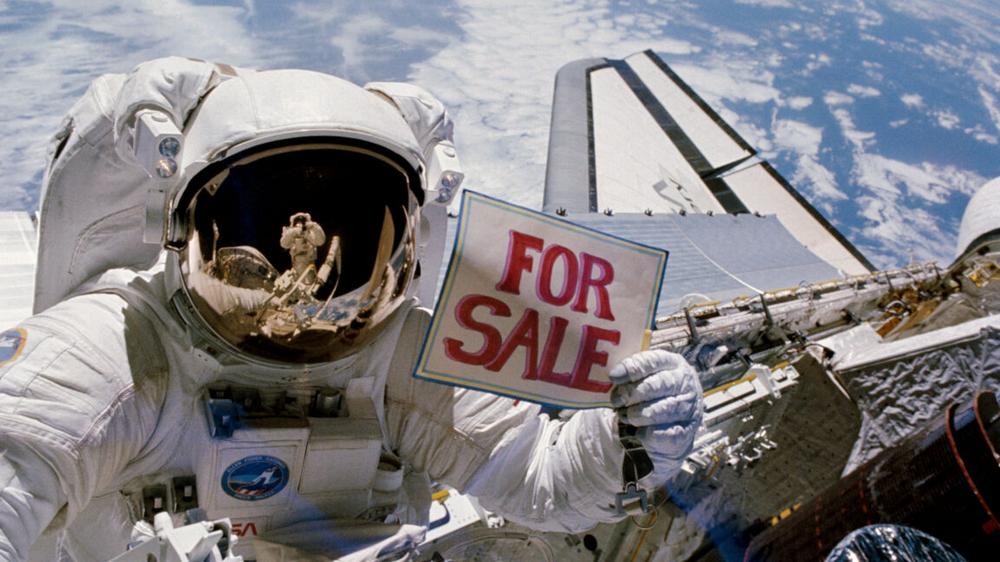These are tough times for Russia's civilian space program. In the last few years, Russia has cut back on the number of Soyuz crew missions it is sending to the International Space Station, and a replacement for the nearly 60-year-old Soyuz spacecraft remains elusive.
While the United States and China are launching more space missions than ever before, Russia's once-dominant launch cadence is on a downhill slide.
Russia's access to global markets dried up after Russian President Vladimir Putin launched the country's invasion of Ukraine in February 2022. The fallout from the invasion killed several key space partnership between Russia and Europe. Russia's capacity to do new things in space seems to be focused on military programs like anti-satellite weapons.
The Roscosmos State Corporation for Space Activities, Russia's official space agency, may have a plan to offset the decline. Late last month, Putin approved changes to federal laws governing advertising and space activities to "allow for the placement of advertising on spacecraft," Roscosmos posted on its official Telegram account.
We’ve seen this before
The Russian State Duma, dominated by Putin loyalists, previously approved the amendments.
"According to the amendments, Roscosmos has been granted the right, effective January 1, 2026, to place advertising on space objects owned by both the State Corporation itself and federally," Roscosmos said. "The amendments will create a mechanism for attracting private investment in Russian space exploration and reduce the burden on the state budget."
The law requires that advertising symbols not affect spacecraft safety. The Russian government said it will establish a fee structure for advertising on federally owned space objects.
Roscosmos didn't say this, but advertisers eligible for the offer will presumably be limited to Russia and its allies. Any ads from the West would likely violate sanctions.
Rocket-makers have routinely applied decals, stickers, and special paint jobs to their vehicles. This is a particularly popular practice in Russia. Usually, these logos represent customers and suppliers. Sometimes they honor special occasions, like the 60th anniversary of the first human spaceflight mission by Soviet cosmonaut Yuri Gagarin and the 80th anniversary of the end of World War II.
Applying a commercial advertisement is more unusual but not unprecedented. In 2000, Pizza Hut reportedly paid $1 million to put its logo on the side of a Proton rocket that launched the Zvezda service module, a key piece of the International Space Station. In case you haven't seen it, someone doctored a photo of the space shuttle, showing it emblazoned with ads like a race car from Formula 1 or NASCAR. This image has been floating around online for decades.
Commercial markets in space have grown rapidly in recent years, from communications and broadband to novel activities like spying on other satellites and making drugs in orbit.
But the space advertising market hasn't really taken off, and Russia seems an unlikely place for it to start. One idea from a Russian science institute to create orbiting advertisements that would be visible from Earth thankfully hasn't progressed beyond the conceptual stage.
But Russia's space program is in trouble. The head of Russia's main spacecraft manufacturer, RSC Energia, issued a dire warning in August, saying his company is struggling to pay wages and deliver the company's products to customers.
"We need to stop lying to ourselves and others about the state of affairs, convincing ourselves and others that everything is fine with us," Energia chief Igor Maltsev said.
Comments like that offer a rare glimpse into the reality of the Russian space program. Perhaps a few million dollars (or a few hundred million rubles) from ad revenue will ensure some workers get their paychecks—if the money doesn't disappear into someone's private coffers, that is.

 Batman: Knightfall to Get Multi-Part Animated Movie Adaptation
Batman: Knightfall to Get Multi-Part Animated Movie Adaptation